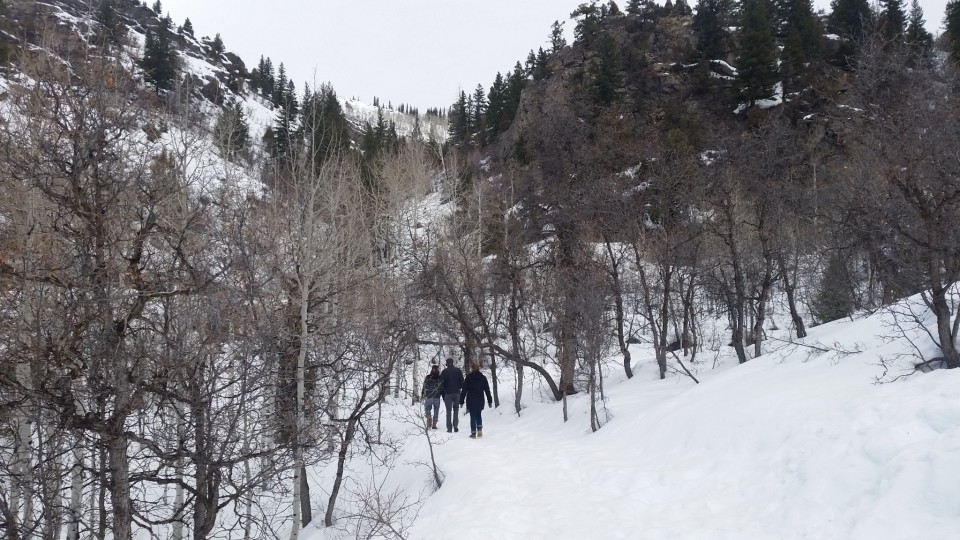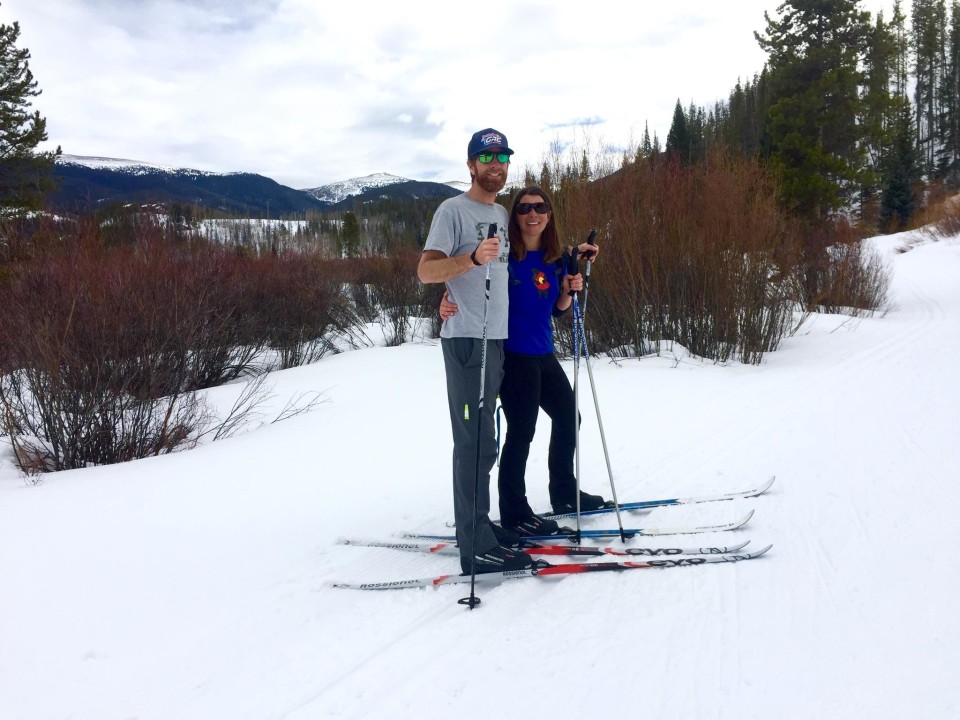This is part 2 of my initial musings on the 2nd annual San Diego Pain Summit, it has to be two parts because there was so much good stuff it was way too much to include in one post. Here’s Part 1 if you missed it which went over stress, motivational interviewing, acceptance, creativity, and being human. Awesome, right?
On to part 2 highlights.
Think, act, feel
In Part 1 I briefly went over Robery Sapolsky’s talk on stress and much of what he said echoed throughout the SDPain summit, particularly in regards to how it’s our response to stress (don’t forget that pain is a stressor) that really matters, our ability to cope and get on with it rather than withdraw and worsen. This was touched upon again in Kevin Vowles‘ talk on Acceptance and Commitment Therapy as well as in Alison Sim‘s talk on Cognitive Behavioral Therapy.
As with stress, it may not be our pain that is so detrimental to our quality of life so much as our response to our pain, and we have a great deal of control over that response. Pain sucks, and part of the suck is that it sucks up all our attention and resources in our efforts to be rid of it so we can get on with it. But the kicker is that we don’t need to be rid of it to get on with it.
We can change our response to pain which can change our experience of pain which can change the trajectory and quality of our lives. And when that happens, we can start paying attention to stuff that matters, we can start living again, rather than waiting and suffering as life passes us by.
This is not psychology, it’s human behavior
That was the take home message from Alison Sim‘s talk (at least for me). She stressed that treating pain has to be a values-based approach that is a collaborative effort between those in pain and those trying to help them.
Bronnie Lennox Thompson and Sandy Hilton also stressed the importance of relationship in treating pain. Just be good humans, folks, it doesn’t mean you have to be a psychologist. Just listen, ask questions, summarize, facilitate, guide (Bronnie and Sandy’s summaries are in part 1).
Thoughts, behaviors, and emotions are all a part of our response to pain and can all be entry points into making changes that can alter the response and alter the outcome. I understand that those things are a bit scarier for folks, it’s much easier to deal with tissues than issues on both sides of the table, but it’s incredibly important for thoughts, behaviors, and emotions to be addressed because that’s what makes us human and we’re dealing with humans in pain, after all.
Destigmatizing pain and psychological factors
Being a human in pain, especially chronic pain, has much more to do with these things than many folks give credit to, both patients and practitioners, and though they could be classified as “psychosocial”, our psychosocial influences have very real biological effects – it all matters and it’s all connected so we need to stop thinking that ‘biological’ is more important than the psychological and sociological.
To paraphrase Patrick Wall, pain never occurs bereft of context. The context matters, both internal and external, so we all need to be more comfortable dealing with thoughts, behaviors, and emotions.
That being said, if those thoughts, behaviors, and emotions are a bit beyond your comfort level, referring out to a psychologist, with tact, can be immensely beneficial.
And I want to emphasize here that seeing a psychologist doesn’t mean pain is all in our heads. Pain is in our lives and psychological skills can be used to improve many aspects of those lives, including performance and behavior (sports psych is a good example) as well as relationships, creativity, work, and stress management. Psychological skills can help us not only get on with it, but enjoy it, too.
Placebo and nocebo
Fabrizio Benedetti’s talk further emphasizes the importance of thoughts, beliefs, emotions, and behaviors because each of those things plays a role in placebo and nocebo responses, which have distinct and measurable PHYSIOLOGICAL effects, which has actually been known for quite some time (also not all in our heads!).
Benedetti defined placebo as a fake treatment plus the psychosocial context of treatment, including sights, smell, touch, words, etc. Those psychosocial factors are what tells a person that a treatment is in progress and which can produce a measurable response that can be on par with actual pharmacological treatments. In fact, some drugs may only work via the placebo effect (when patients take them unknowingly, there is no response – fascinating!).
So the ritual is important, so important than when only words are injected into a patient along with a fake treatment, the patient can still have a physiological response as though they’d taken a drug. Words matter! A lot!
Physiological changes
In recent trials there have been measurable changes in brain activity and inhibition, release of neurotransmitters, and firing patterns of individual neurons after placebo. That’s wild! And it appears to not only be applicable in medical treatment but in athletic performance as well. Turns out that placebo O2 (empty canisters of oxygen) can improve athletic performance at altitude. Cool, right?
Next time out I’m going to give myself a placebo so I can cover more ground ;)
And did you know that placebo plus positive suggestion can still work even if you know it’s a placebo? Fascinating!
The keys lie in the ritual and the positive suggestion. Also, the effect is much higher and more consistent if active therapy is given multiple times prior to placebo being given as a learned response takes place, allowing the placebo to elicit the same response as the previously taken active drug.
(Side note: there is a recent book out called Cure: A Journey into the Science of Mind Over Body by Jo Marchant, awful title, I know, but very cool book, though I’m only 1/2 way through it I would already recommend it. The first two chapters are on placebo and she even went up into the Alps to interview Benedetti. There’s very cool research being done on conditioned immune responses that may eventually lead to patients being able to take less active drug after a course of active drug + placebo that leads to a conditioned response that allows active doses to be reduced over time. Very cool!)
Nocebo
Nocebo is the flip-side of placebo, it’s negative suggestion, and it appears to be more potent than placebo. Whereas placebo responses are a bit time-delayed and highly variable across and within patients, nocebo responses are very fast and are not as variable, they are pretty universal.
Words matter. A lot. Especially scary ones. Don’t use them!
If you give negative suggestions to a patient after shoulder surgery (that they’ll have a lot of pain, say), their range of motion decreases, areas of their pre-frontal cortex (associated with anxiety) are more active, and CCK levels go up, facilitating pain transmission, perception, and intensity. Yowsa!
But give them positive suggestions and their range of motion increases to a full range. Boom! The power of positive suggestion.
Anyway, I think this shit’s cool.
Biomechanics
Okay, this is likely to become a third summary all it’s own because movement is my wheelhouse, my MS is in human movement, after all, so I LOVED Greg Lehman’s and Todd Hargrove’s talks.
One of the reasons I went to grad school in Human Movement was because I thought my pain was persisting because of biomechanics. As a peer fitness trainer for my fire department it was ingrained in me that: pain = poor posture / pain = poor biomechanics / pain = injury.
This was reinforced by most of the doctors and physical therapists I saw. Naturally I drew the conclusion that my ongoing pain was because I was moving wrong, sitting wrong, sleeping wrong and that as a result of all this wrongness, I was messing up my surgery and redamaging my hip (I even had the images from my surgery to refer back to so I knew just how much damage I was doing to myself again).
Luckily my surgeon and one of my movement therapists told me that wasn’t possible, that I wasn’t redamaging my hip with each painful step, with every excruciating attempt at sitting on furniture, with every wonky posture (unfortunately they didn’t tell me what was possible so I was still left with a whole lot of doubt and uncertainty, but that’s for another time).
And luckily I was in school studying pain science and learning that pain was way more complicated than I’d imagined, that it wasn’t likely that damaged tissues were my problem.
But I digress.
Do biomechanics matter?
Sometimes. Maybe. Probably not most of the time.
Greg Lehman has done extensive reviews of the literature to find out just how much biomechanics matter and has contributed a great deal to my own understanding (my own unlearning) of why biomechanics and posture don’t matter in the ways many of us though/think they do. As is repeated often in the pain science circles, poor posture does not cause pain, it’s much more likely that sustained postures lead to discomfort and pain, any sustained posture (even ‘perfect’ posture, which doesn’t exist, by the way).
They (probably) matter if we’re picking up heavy shit or leaping off buildings or jumping over our friends heads (and probably only when landing at that, note the knee valgus at take off, under low, controlled load, and the lack of valgus on landing, under high, less controlled load) but not so much when we’re texting, carrying groceries, or leaping off the couch.
Day to day, don’t fret so much
Biomechanics might not even matter all that much, at least in the way we think, when we’re exercising, especially under low loads, such as our body weight. There is no one right way to move, no such thing as perfect form. Even when we’re trying to maintain a ‘neutral spine we can’t and we all have different shaped pelvises and femurs and whatnot which makes all of us squatting identically impossible. We’re all different, we’re all going to move different.
Movement is variable by nature and for good reason, by having a lot of movement options, we’re able to accomplish movement tasks in a variety of contexts, both internal and external, without hurting ourselves. We can get shit done without having to do exercises we hate, it all comes down to what our goals are and working toward those goals through practice and progression.
As Greg says, calm shit down, build shit back up. Maybe it’s that simple, eh?
(But there is a but that I must include before my anti-‘correct posture’ bias prevents me from adding it: posture and biomechanics can contribute to pain when there is neural compromise, and if there’s neural compromise, there definitely might be some nociceptive input contributing to the experience of pain. There might still be an issue in the tissues, asMichael Shacklock put it.)
This harkens back to those sustained postures again (imo) and the importance of frequent, variable movement. Moving our bodies often and in lots of different ways allows everything to move more freely, including our nerves. Motion is lotion, folks.
Find ways you like to move and do it often. I love hiking with people I love.
Better Movement
And last but not least, I’ll conclude with Todd Hargrove’s presentation. I have been following Todd’s work for a while and it speaks to the very core of me. His book, A Guide to Better Movement, made light bulbs flash non-stop in my brain throughout the entire book. Aha! Yes! Aha! That’s what it felt like when I read it and his presentation didn’t disappoint.
Mindful movement and play have been instrumental in changing my experience of pain and allowing me to live a full, valued, meaningful, enjoyable life, and that is much of what Todd is all about.
Movement shouldn’t be a rigidly prescribed thing, it should be exploratory, voluntary, repetitious with variation, playful, meaningful, functional, fun, and person-centered. No two of us are the same, after all, so no one movement will be best for all of us, but there will be best movements for each of us, unique to us, that we will only discover if we experiment a bit.
As Todd put it, mindful movement helps create an awareness, or perhaps it’s more apt to think of it as no longer having a lack of awareness, of the body and how it moves through space that helps us to form an image of ourselves. That image can be accurate (or pretty close) or inaccurate (or wildly inaccurate).
Self Image
This awareness is important because we all have a self-image that we act in accordance with, and that self-image impacts the physiological functions of the body. Our internal representations of our body in our brain, or cortical maps, help create that self-image and those maps adapt over time to what we sense and how we move.
The maps can become smudged and less well-defined, they can become inaccessible if we don’t perform certain movements for a long period of time, or they can become larger or more precise as we become better at a particular skill.
So the target of movement therapy is not no flexible bodies, but rather flexible brains. Thoughts and perceptions evoke new movements and new movements evoke new thoughts and perceptions. So good movement therapy can lead to feelings of being strong, robust, adaptable, resilient, and capable of moving well while decreasing feelings of being broken, weak, and incapable.
Through movement one can be provided with evidence of safety during movement, that we’re strong and able, which not only changes our bodies but also changes our minds about our bodies, that’s huge! But folks often lack confidence when first trying to move with pain, so therapists are in a wonderful position to help them explore uncertain movements and feel safe. (This was something that Simon Roost Kirkegaard did for me over Facebook so the possibilities are definitely there!).
So go play and encourage others to play. Better yet, play with others
This ties back into the biomechanics talk above, in this type of exploratory, playful movement, we needn’t be too rigid in form or prescription.
If allowed, we will discover the best, most efficient ways to move, the most comfortable ways to move, the most natural ways to move. Our way to move.
This helped me beyond measure as someone who was obsessed with posture and form, believing that poor posture and poor biomechanics were causing my pain. I fretted over my lumbopelvic rhythm while I was walking, worried about my reshaped femur making my leg shorter, my counter-rotated torso and t-spine.
It was maddening and I suffered for it.
It’s about how movement feels, not what it looks like
Once I eased up on all that and stopped caring so much about what my movement looked like and paid more attention to what it felt like, I improved by leaps and bounds (quite literally, I was terrified of leaping or bounding for years and then suddenly, once I started to explore movement again, I could).
So my advice is to move frequently in ways that feel comfortable, that can be done with ease and done often, and that are playful and not too painful.
And don’t worry so much about if you’re doing it ‘right’, there is no universal right, just what’s right for you.
Wrapping up and looking toward the future of SDPain…
Pshew. Whadya think? The SDPain Summit is pretty awesome, right? If you weren’t able to attend, the videos are still available.
Even better, next years line up is already set and you can buy early bird registration right now.
With a keynote like Peter O’Sullivan and a lineup that includes one of my fave people, Jonathan Fass, and pain folks like Ben Cormack and Carolyn Vandyken, and a special Clinicians Get Creative session by the Naked Physio (Paul Lagerman, who previewed it, so-to-speak, at this years summit and it was a huge hit, that summary is in Part 1. Go here if you’d like to contribute, even if you won’t be attending), you can’t go wrong!
And if want to contribute to SDPain and keep pain science education for manual therapists alive in the US, donate here! Trust me, it’s an excellent cause.
Thanks for making it this far, folks! As always, I’d love to hear your thoughts, experiences, stories, perspectives. There’s more to come as a result of this years Summit, I’ve lots more to say (shocking, I know). Hope you all have a wonderful day and some adventure in your near future.




2 Responses to "Musings on the 2016 SDPain Summit (part 2)"